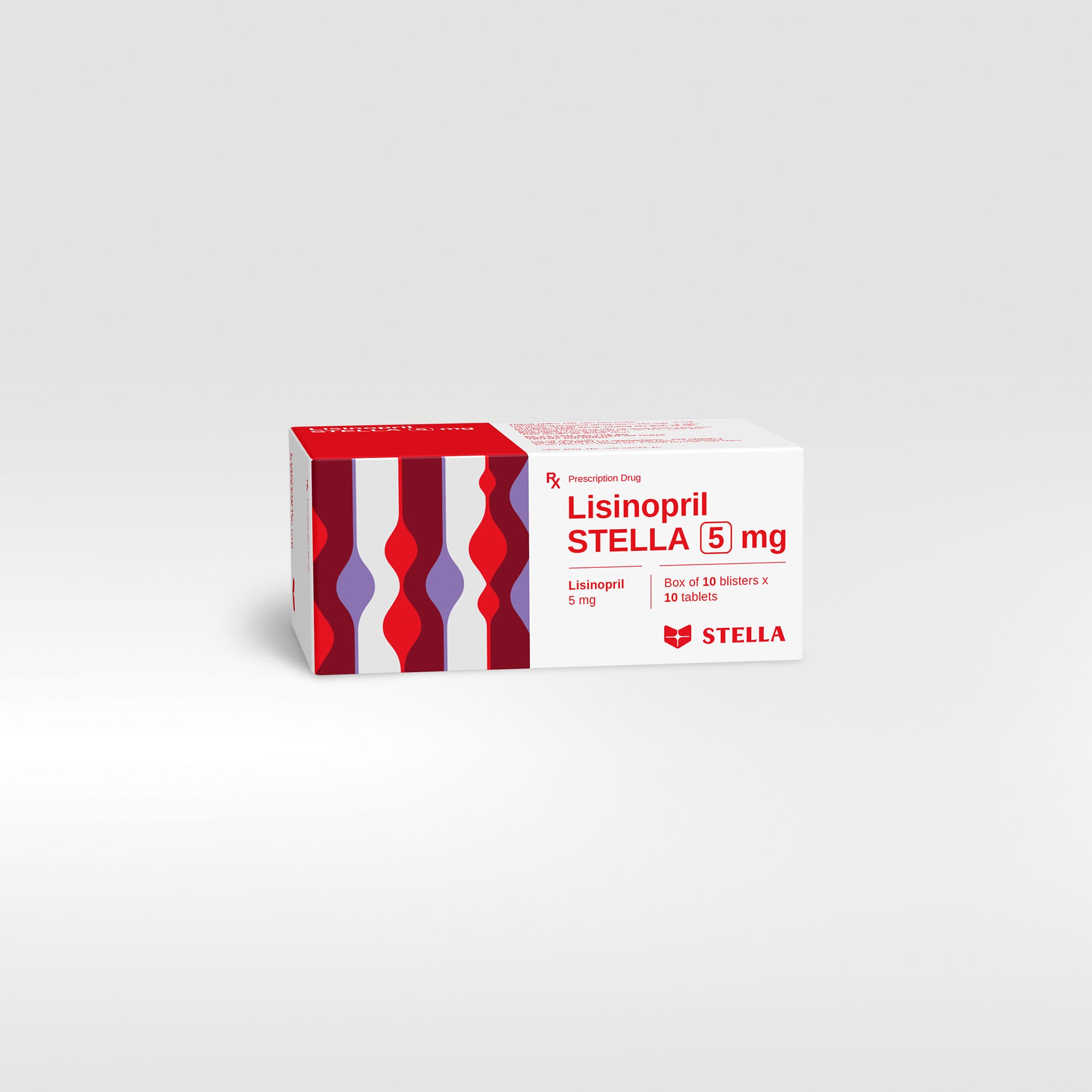Indications:
- Hypertension: Lisinopril is used alone or in combination with other classes of antihypertensive agents (e.g., thiazide diuretics) in the management of hypertension.
- Congestive heart failure: Lisinopril also is used in conjunction with cardiac glycosides and diuretics in the management of symptomatic congestive heart failure resistant to or inadequately controlled by cardiac glycosides and diuretics.
- Acute myocardial infarction: Lisinopril may be used in conjunction with thrombolytic agents, aspirin, and/or β-adrenergic blocking agents to improve survival in patients with acute myocardial infarction who are hemodynamically stable.
- Diabetic nephropathy.
Adults
Hypertension:
- In patient not receiving a diuretic: the usual initial dosage of lisinopril is 5 – 10 mg once daily, adjusted according to the patient’s responses. The usual maintenance dosage of lisinopril in adults is 20 – 40 mg daily, given as a single dose.
- In a patient already receiving a diuretic: It is recommended that diuretic therapy be discontinued 2 – 3 days before initiating lisinopril. If diuretic therapy cannot be discontinued, sodium intake can be increased prior to initiating lisinopril, and lisinopril should be initiated at a dosage of 5 mg daily under close medical supervision for at least 2 hours and until blood pressure has stabilized.
Congestive heart failure: The initial dosage in adults with normal renal function and serum sodium concentration is 2.5 – 5 mg daily. The usual effective dosage is 5 – 40 mg daily, given as a single dose.
Acute myocardial infarction: A 5 mg dose of lisinopril should be given within 24 hours of onset of symptoms of myocardial infarction followed by a 5 and 10 mg dose 24 and 48 hours later, respectively. Thereafter, a maintenance dosage of 10 mg daily should be used; lisinopril therapy should be continued for 6 weeks.
Diabetic nephropathy: The initial dose is 2.5 mg once daily. In normotensive type 1 diabetics the maintenance dose is 10 mg daily, increased to 20 mg daily if necessary to achieve a sitting diastolic blood pressure below 75 mmHg. In hypertensive type 2 diabetics, the dose should be adjusted to achieve a sitting diastolic blood pressure below 90 mmHg.
In children
Hypertension:
- 6 to 12 years of age: A starting dose for lisinopril of 70 micrograms/kg (up to 5 mg) once daily. This dose may be increased at intervals of 1 to 2 weeks to a maximum of 600 micrograms/kg or 40 mg once daily.
- 12 to 18 years of age: An initial dose of 2.5 mg daily increased as necessary to a maximum of 80 mg daily.
Heart failure: 12 to 18 years of age: The initial dose of 2.5 mg once daily increased as necessary in steps of no more than 10 mg at intervals at least 2 weeks to a maximum of 35 mg once daily.
In patients with renal impairment
In adult patient with renal impairment, the initial dose of lisinopril should be reduced depending on the creatinine clearance (CC) as follows:
- CC 31 to 80 ml/minute: 5 to 10 mg once daily.
- CC 10 to 30 ml/minute: 2.5 to 5 mg once daily.
- CC less than 10 ml/minute or on dialysis: 2.5 mg once daily.
The dose should be adjusted according to response, to a maximum of 40 mg once daily.
Lisinopril should not be given to children with a glomerular filtration rate of less than 30 ml/minute per 1.73 m2.
Usage:
Lisinopril STELLA 5 mg is administered orally.














